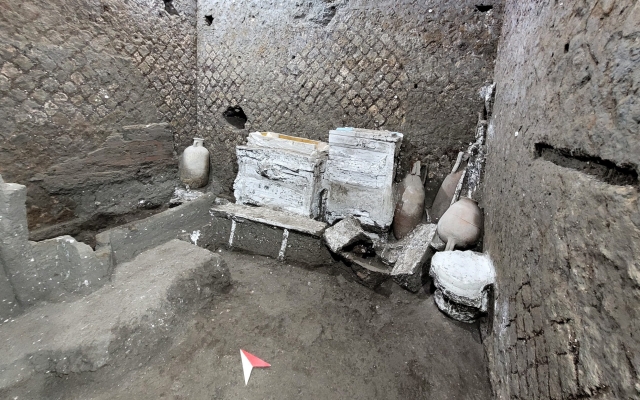 The discoveries were made in a tiny room at Villa Civita Giuliana
The discoveries were made in a tiny room at Villa Civita Giuliana
The find «suggests that the black rat was already widespread in the Pompeii area in first century AD,” Gabriel Zuchtrigel, director of archaeological excavations, wrote in a newspaper published on Sunday titled “Of Mice and Men – New Discoveries in the Servants’ Quarters of Roman Villa Civita Juliana near Pompeii.”
Although rats and mice feature prominently in ancient Roman literature, fables and jokes, «the extent of ancient rodent infestation and its possible impact on the spread of disease is still debated,» said Professor Zuchtrigel.
That would be an exaggeration say that ancient Roman cities were infested with rats, but «the presence of at least three rodents suggests that the influence of mice and rats on ancient hygiene, disease control, and storage conditions cannot be underestimated.»
The details of the finds offer an «almost photographic quality [understanding] of life» for slaves in ancient Rome — people who are barely mentioned in written sources, said Professor Zuchtrigel.
«Looking at the rodent-infested rooms in the Civita Giuliana, we it is proposed to appreciate how, despite everything, the people living here have struggled to maintain a minimum of dignity and comfort.»
A statement from the Ministry of Culture said: «These details once again highlight the insecurity and poor hygiene, in which the lower strata of society lived at that time.
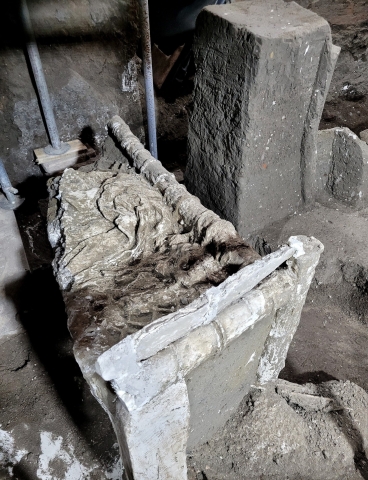 Two remarkably well-preserved slave rooms were discovered in November 2021.
Two remarkably well-preserved slave rooms were discovered in November 2021.
Scientists found no traces of bars on the windows of the slaves' room or locks on the doors, which suggests that they were not physically forced to stay on the estate.
Control was exercised through more subtle means, such as allowing a male slave to take a female slave as his partner, forming a relationship that would then produce children. According to archaeologists, this established links and a certain degree of dependence between the enslaved peoples and their owners.
There was also a hierarchy between slaves, in which some of them were elevated to the role of overseers and received special rights and rights. privileges,” said Professor Zuchtrigel.
Animals are among the many intriguing new discoveries made by archaeologists in two beautifully preserved slave rooms discovered in November 2021.
Careful analysis revealed that the two small rooms contained wooden cupboards, shelves holding cups, plates and other utensils, large baskets, amphorae and an oil lamp hanging from a nail in the wall.
Experts also found. wooden beds with rope netting, as well as a simple four-legged bench, a knife blade, a small scythe, and a rectangular iron hoe blade. Although organic materials such as wood and leather have long decomposed, their imprints are preserved in layers of volcanic ash.
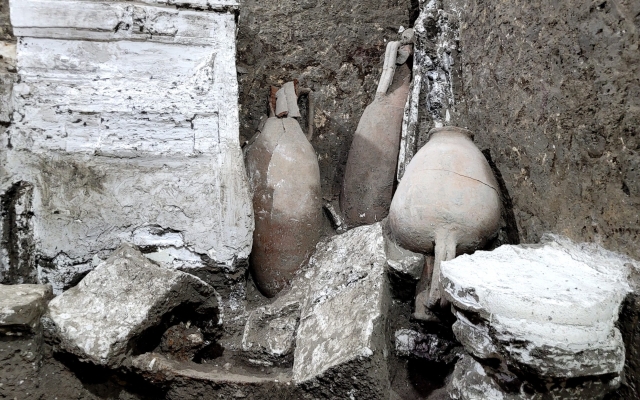 Two small rooms had wooden sideboards, shelves with cups, plates and other utensils.
Two small rooms had wooden sideboards, shelves with cups, plates and other utensils.
Excavations at the Villa Civita Julian were first carried out in the early 20th century. They resumed in 2017 when police discovered the site had been ransacked by illegal diggers.
Araeologists have made some remarkable discoveries in Pompeii in recent years thanks to a €105m (£89.8m) project. funded by the EU and called the Great Pompeii, from the remains of horses to a ceremonial chariot decorated with silver and bronze medallions, and several human victims of the eruption of Vesuvius.
“What we learn about the material conditions and social organization of that era opens up new horizons for historical and archaeological research,” said Gennaro Sangiuliano, Minister of Culture, adding that the discoveries shed light on “remarkable aspects of daily life in antiquity.”











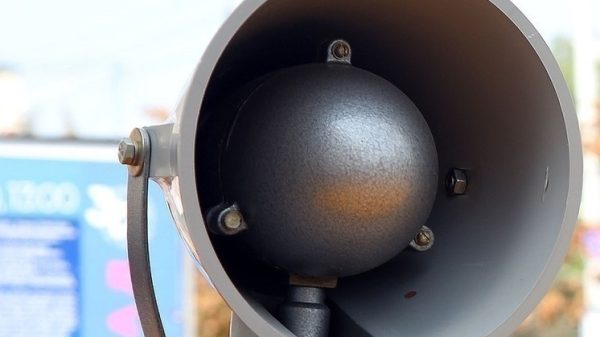
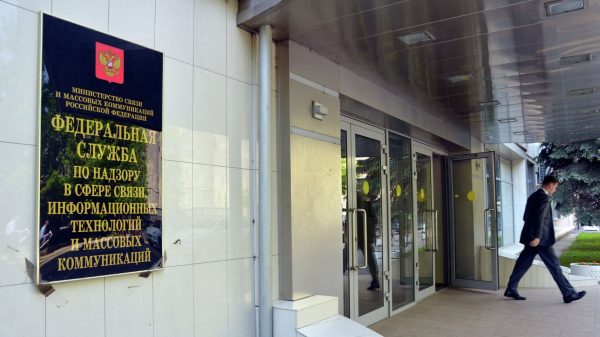















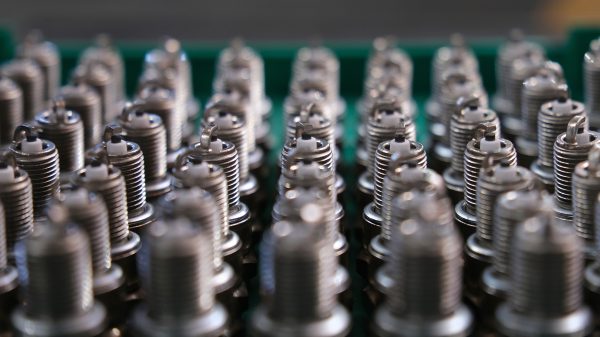


























Свежие комментарии